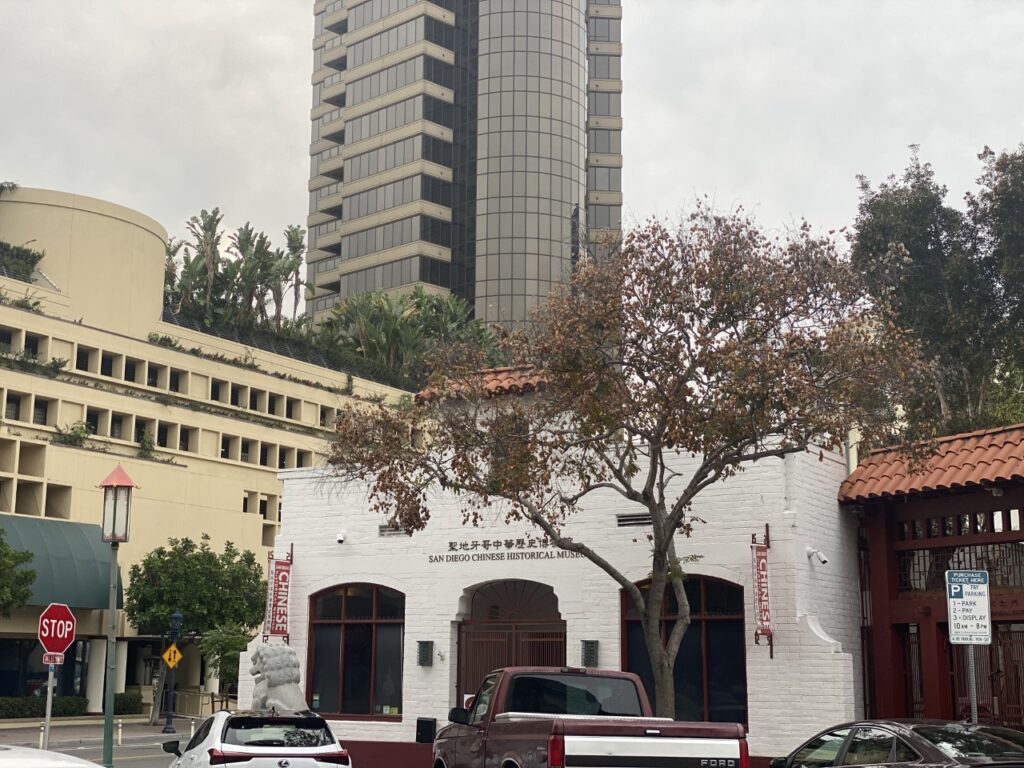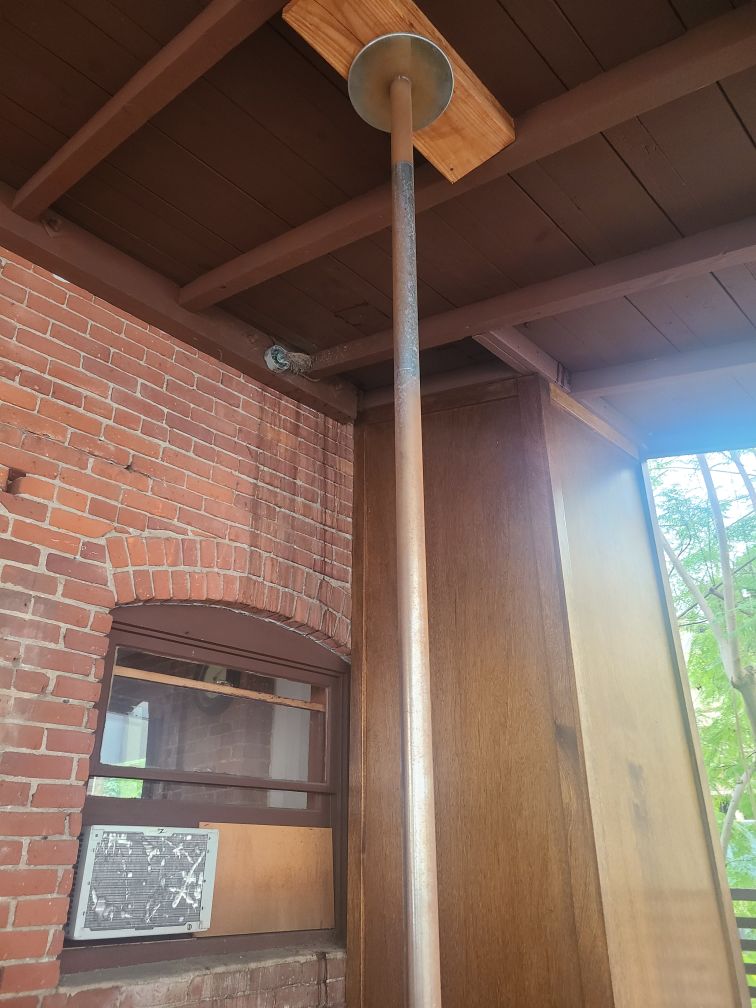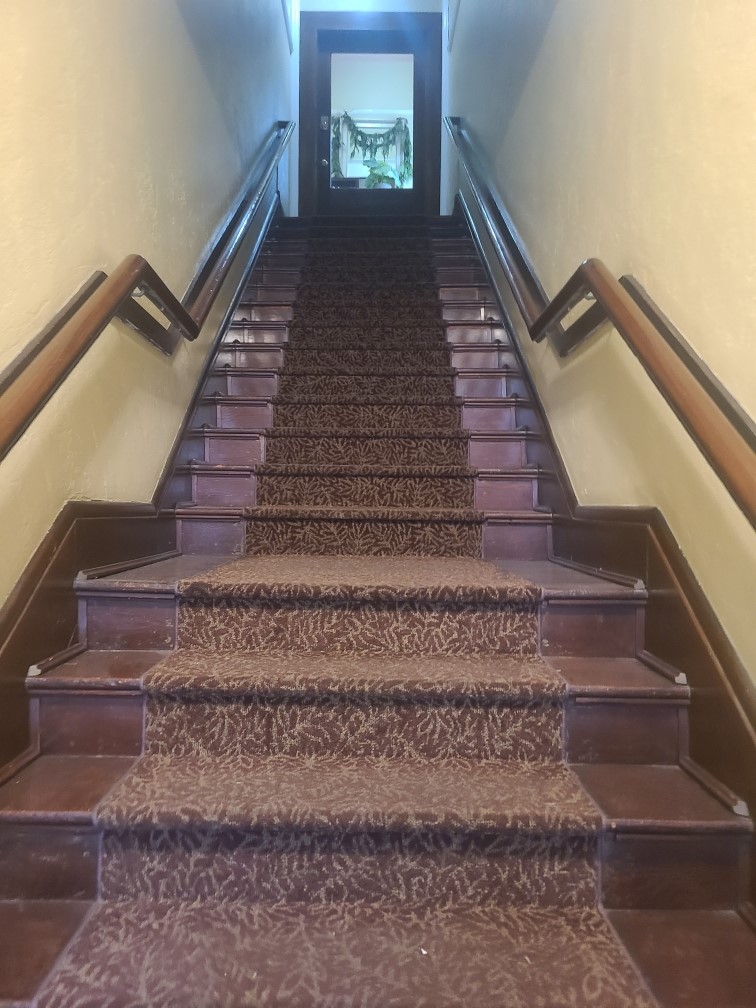No products in the cart.
Landmarks
Two More Treasures
By 1881, 800 Chinese were living in San Diego, most of them men who had come to work on the railroad at the request of Ah Quin. As they were far from home, marginalized and relatively poor, they needed resources by which they could have their basic needs met and also find individuals for friendship and camaraderie. Such places were available in the downtown Stingaree district.
The Chinese Mission Building
(1927)
404 Third Avenue
Architectural Style: Spanish Mission Revival
Architect: Louis J. Gill

The first Chinese Mission School started in 1885 and served as social and religious center for Chinese immigrants. Until 1927, it moved around throughout the downtown area wherever a building was available. The first site was on 13th St. and F, and was inspired by Lee Hong, a young Chinese resident who had come from San Francisco, and was familiar with the mission schools there. San Franciscans had learned early on that for the Chinese and Americans to conduct business they had to be able to communicate. The mission schools provided both religious training and English instruction.
The F Street location was too far from Third Avenue, where most of the Chinese lived. Consequently, in 1901, the Mission moved to 663 First Street between Market and G Streets. In 1907, they moved to a building next door on property owned by George W. Marston, a prominent San Diego merchant and philanthropist. He was also a lifelong friend of Ah Quin, the unofficial Mayor of Chinatown. Marston donated the land at 645 First Avenue, which also had a long dormitory building in the rear of the Mission. One of the first teachers at this Mission was Mrs. Margaret Fanton, who not only taught English and religious studies, but also served as the areas first social worker to the community.
A thriving Chinese community congregation remained there until 1925. By this time, the Mission building was in a sad state with a leaky roof and
crowded conditions. Many people zealously raised money for a new building, which was designed by Louis J. Gill, nephew of Irving Gill. The Spanish Mission Revival building was completed and dedicated on November 22, 1927. It remained an active part of the community until the 1960s, when redevelopment services threatened to raze the building to make way for a Ralph’s market. The Chinese Historical Society and CCDC had the structure moved to a vacant lot on Third Avenue, close to its present site, where it remained for two years, while funds were raised for its renovation. It was rededicated as the Chinese Historical Museum on January 13, 1996. It still stands there today flanked by two massive stone lions – a testament to hardworking immigrants who became pillars of their community and of San Diego.
Quong Building
(Stingaree Bordello Building)
1913
418 Third Avenue
Architectural Style: Chinese/Commercial
Architect: Unknown

Due to severe economic and political instability in China, many young Chinese emigrated to the United States in the hope of finding work during the Gold Rush. Their initial plan was to send funds to aid their families back home, and later to return to China. After the Gold Rush wound down, the majority found jobs in the railroad industry. Ah Quin, an educated and successful businessman who had settled in San Diego, recruited many of these Chinese workers to help build the Transcontinental Railroad, the pet project of Alonzo Horton.
These extremely hardworking young men had little time for diversion or relaxation, but as most lived in the infamous Stingaree, this is where they found their recreation. The area had a profusion of saloons, opium dens and illicit drugs, gambling and, of course, prostitution. Possibly the most popular and well known of these pleasure palaces was the Quong Building or the “Chinese Bordello building.” The structure was named after Mow Yuen Quong, a merchant, and the proprietor of a store at the site from 1889 until 1928. In 1889, the City Directory also lists an “Opium Den” on the property. Its claim to fame, however, was as a bordello.
The building itself is rather unpretentious. It consists of two stories, the upper level being 416 and the street level being 418.The entire building is brick with stucco plastering on the outside. The upper level is accessed through a door opening onto an elegant staircase topped by a lightwell over the second-floor landing. There are bay windows upstairs facing east. The floors are hardwood, as are the doors to the numerous private rooms, all featuring inside doorbells. It has been rumored that these rooms were also equipped with locks operable only from the inside allowing for more privacy. Currently, some have brass plates over the keyholes on the interior and key holes on the outside.
Since 1850, there have been a series of individuals owning the site/building, with Alonzo Horton acquiring it on October 4, 1869. Sometime between 1887-88, Ah Quin came into possession of the site and established a building from which he ran a Chinese and Japanese Fancy Goods store. Mow Yuen Quong opened a Chinese restaurant on the premises in 1889, and eventually also sold Chinese and Japanese goods. Throughout the years, the site has also been the home of a garage, a bakery, a transfer and storage company, and an appliance repair store.
During the Great Raid of 1912 led by Police Chief Keno Wilson, the bordello operating upstairs called the Oasis was his first stop. Various entities including the Ladies Purity League and the Door of Hope had banded together calling for a cleanup of the infamous Stingaree before the Panama-California Exposition opened in 1915. The raid culminated in front of the Yuma Building where the ladies were gathered and marched down 5th Avenue to the railroad station, where they could be “helped” to leave town.

Another well-known madam at the Jewel Rooms, the newer bordello at 416 Third Avenue was Mary Smith. Ms. Smith operated during the late 1920s and early 1930s. She was a little too well known, as she was sued by the city for running a house of ill repute.
Those days are past, and the Quong Building is now home to Brows of a Feather, micro-blading, and the Lazy Hippo, a popular breakfast restaurant. An additional tenant is the world-famous Whiskey House, listed in the Guinness Book of World Records as having the most whiskeys in the world at over 4,000. For those interested, they also serve food!
Since 1974, this enduring building has been owned by Mr. Fritz Ahearn, who was kind enough to share his historic knowledge and resources with the Davis-Horton House Museum. Many, many thanks, sir.

Sandee is the Historian/Lead Tour Guide for the Gaslamp Quarter Historical Foundation. She can be reached at [email protected].
